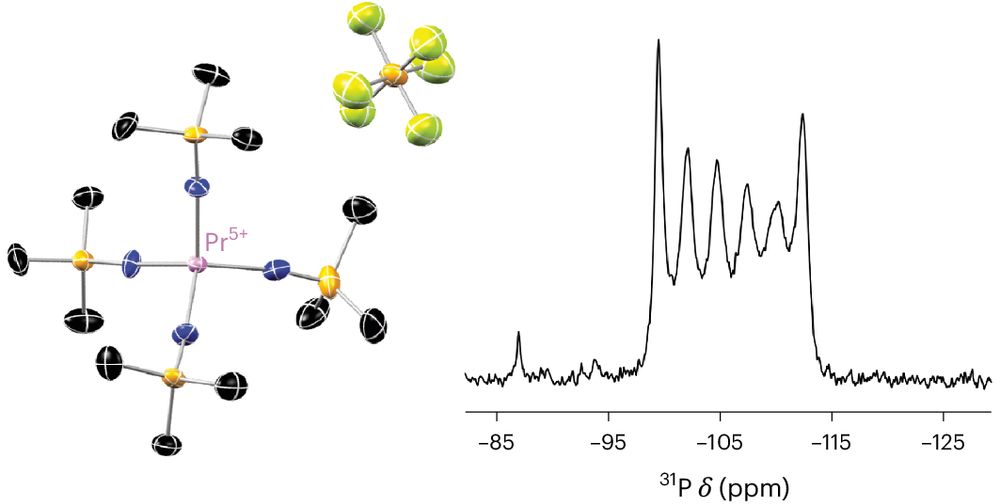Thomas Albrecht
@teasactinides.bsky.social
290 followers
250 following
35 posts
University Distinguished Professor at the Colorado School of Mines. Jointly appointed at Idaho National Laboratory and Los Alamos National Laboratory.
Posts
Media
Videos
Starter Packs
Reposted by Thomas Albrecht
Reposted by Thomas Albrecht
Reposted by Thomas Albrecht
Valérie Vallet
@valevallet.bsky.social
· Jun 18

U4+ Speciation in Acidic Aqueous Solution: Insights from UV–Vis, EXAFS, XANES, and Quantum-Statistical Simulations
This theoretical study investigates the UV–vis absorption properties of U4+-containing aqueous solutions and their relationship with the nature of aqua-complexes present at varying acidic levels. High...
doi.org
Reposted by Thomas Albrecht
Joe Sperling
@jsperling91.bsky.social
· Jun 10

Effects of the Inverse Trans-Influence in a Berkelium(III) Phosphine Oxide Complex
An example of a 249Bk3+ phosphine oxide complex has been prepared to examine and quantify the effects of the inverse trans-influence (ITI) on a late actinide complex. This has been accomplished through a comparison of cis and trans Bk-ligand bonds in the meridional berkelium(III) complex, BkBr3(OPCy3)3 (OPCy3 = tricyclohexylphosphine oxide). A detailed bond metric analysis was completed that includes the shortest published distance for a Bk3+–O bond, attributed to the smaller coordination number of Bk3+ of six in mer-BkBr3(OPCy3)3. ITI calculations of the trans Bk3+–O bond provide an ITI value (98.5(2)%) comparable to that of mer-AmBr3(OPCy3)3 (98.2(2)%) and indicate a small 5f orbital contribution to bonding. This effect is discussed in the context of the isomorphous lanthanide(III) series where the ITI is calculated to be higher for mer-BkBr3(OPCy3)3 than in most Ln3+ analogues.
pubs.acs.org
Reposted by Thomas Albrecht
Reposted by Thomas Albrecht
Joe Sperling
@jsperling91.bsky.social
· May 13

Unveiling the covalency of versatile Pu(iii)-N bonds in a unique plutonium(iii) complex
A trivalent plutonium–pyrazinyl–tetrazolate complex Na2[Pu(Hdtp)(dtp)2(H2O)4]·9H2O (Pu_dtp, H2dtp = 2,3-di-1H-tetrazol-5-ylpyrazine) was synthesized through metathesis reaction of plutonium bromide an...
pubs.rsc.org
Reposted by Thomas Albrecht
Reposted by Thomas Albrecht
Joe Sperling
@jsperling91.bsky.social
· Mar 12

Insights into the Complexation of Actinides by Diethylenetriaminepentaacetic Acid from Characterization of the Americium(III) Complex
Diethylenetriaminepentaacetic acid (DTPA) is a frequently used chelator in the nuclear and medical industries, especially for the complexation of trivalent actinides. However, structural data on these complexes in the solid-state have long remained elusive. Herein, a detailed structural analysis of the presented crystal structures of [C(NH2)3]4[Nd(DTPA)]2·nH2O and [C(NH2)3]4[Am(DTPA)]2·nH2O, where [C(NH2)3]+ is guanidinium, details the subtle differences in the Lewis acidity between a lanthanide/actinide pair of similar ionic sizes. Contractions in nitrogen–metal bond lengths between neodymium(III) and americium(III) were observed, while the metal–oxygen bonds remained relatively consistent, highlighting the marginal favorability for actinide complexation over the lanthanides with moderately soft N-donors. Spectroscopic analysis shows significant splitting of many transitions and relatively strong electronic interactions with traditionally low-intensity transitions in the americium complex, as is demonstrated in the 7F0→7F5 transitions. Pressure-induced spectroscopic analysis showed surprisingly little effect on the americium complex, with 5f→5f transitions either not shifting or marginally shifting from 2 to 3 nm at 11.93 ± 0.06 GPa─atypical of a soft, N-donor americium complex under pressure. Large voids occupied by water molecules in between the complexes within the crystal structure may be responsible for the lack of pressure response in the 5f→5f transitions.
pubs.acs.org
Reposted by Thomas Albrecht
Reposted by Thomas Albrecht
Reposted by Thomas Albrecht













